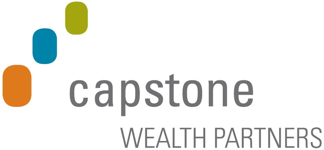High School Seniors…Ready to Fill Out Your Financial Aid? A Teachable Moment!
By Joe Messinger, CFP®
December 17, 2015
In the world of college finances, you’ll come across lots of acronyms, and all those letters can be so confusing. Today we’re talking about the FSA ID.
What?! Is that a type-o? Do we mean to type FAFSA? No, these acronyms are two separate things.
The FAFSA is the Free Application for Federal Student Aid. We talk about the FAFSA in other posts. Today, we’re talking about the FSA ID. It is related to the FAFSA but is a whole different thing. AND more importantly the FSA ID is an important teachable moment for your student!
FSA ID stands for Federal Student Aid ID and is used by the U.S. Department of Education. Basically the FSA ID is a username and password combination created to protect your information when you complete the FAFSA starting October 1st. High school seniors and their parents can be creating one now.
May seem like a simple thing, but with this ID you can sign forms electronically, access personal records, and make binding legal obligations (like federal student loans). So this ID is more than just access to a website.
The security of your FSA ID is very important. Someone having access to your ID could sign documents like loan paperwork in your name. Having your FSA ID is like having your written signature so keep that information safe.
About the “teachable moment”…
The FSA ID and filing the FAFSA is the responsibility of the student attending university. We know that parents provide their information and fill out the forms, but making sure the student is involved and fully aware of what they are signing up for is important. For most students who choose to take out a Federal Direct Stafford loan, this borrowing will be the first thing that will appear on their credit report in their lives.
How does credit work? Why is the interest rate important? What is the difference between subsidized and unsubsidized loans? Refer to some of our other posts for more info on how student loans work. A final teachable moment is the importance of protecting your identity. Up to this point students probably had no cyber identity of any value to a criminal. Make sure they understand how important protecting their passwords is.
We’ll leave you with 7 final things you need to know about the FSA ID:
- Students attending college will need their own FSA ID.
- Parents who need to sign paperwork for dependent children will need one as well.
- IDs can be created at this website.
- The creation process requires your social security number and other personal information.
- You’ll also create challenge questions for account protection.
- Be sure to provide an email address that will remain with you over time—not one tied to a high school for example. (If you provide an email address, you’ll be able to recover your password in the future in the event you forget the security questions.)
- The process of getting an FSA ID is not instantaneous…the social security department needs to verify your information so expect a few days wait time.
Get a jump start and get your FSA ID today.
RELATED ARTICLES
College Planning
College Fairs: A Useful Tool for All High School Students
September 12, 2024


